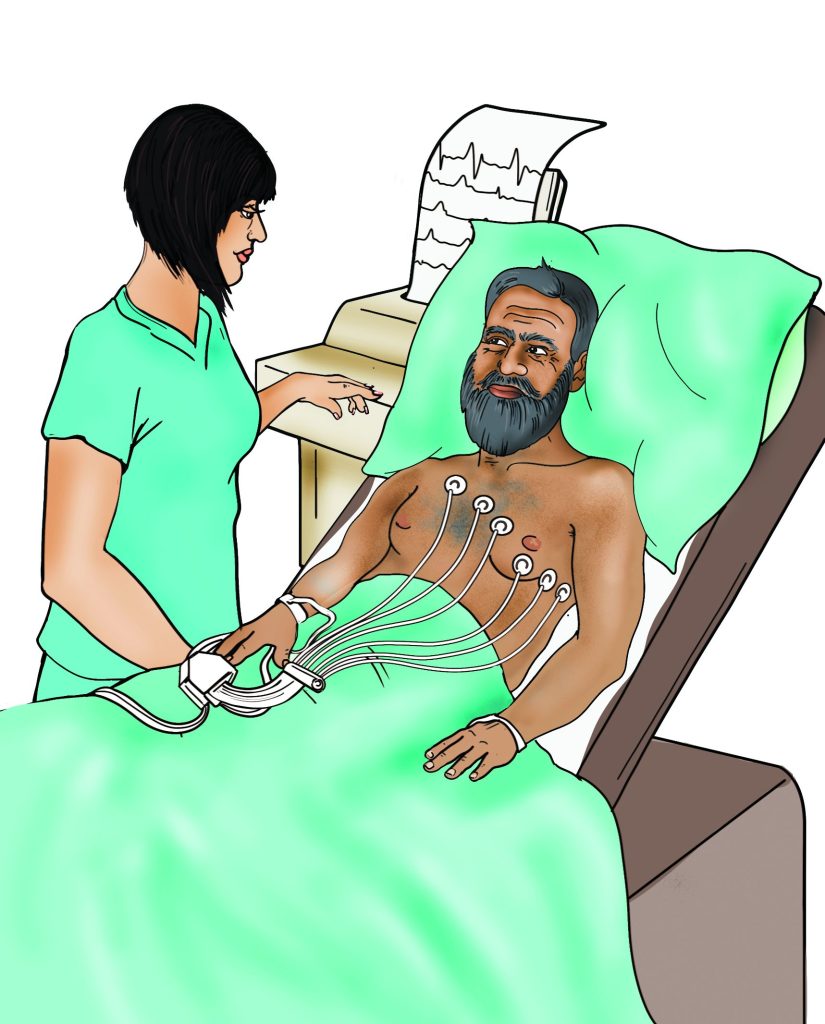
Stickers are placed on the chest and the electrical activity of the heart is recorded.
A resting ECG is routine for a new patient, although it does not usually show specific abnormalities associated with valve disease. It may also be requested after any change in symptoms including an event like a dizzy spell, or if an irregular pulse is found.
The ECG is useful for detecting abnormal rhythms, most commonly atrial fibrillation. This may need treatment with blood thinners.
The ECG may also detect heart block needing further treatment, sometimes with a pacemaker. The calcium developing in aortic stenosis can occasionally press on the AV node which is the ‘junction box’ between the atria and the ventricle, and this can lead to heart block.
